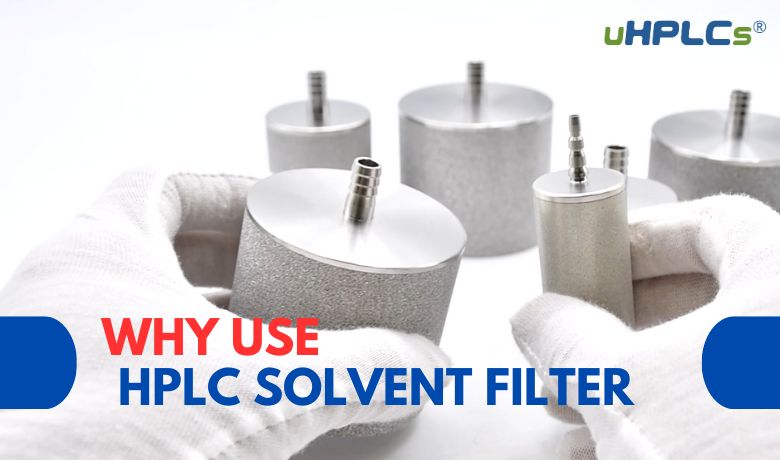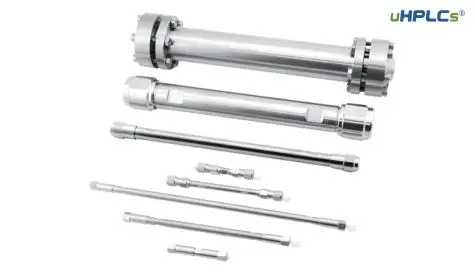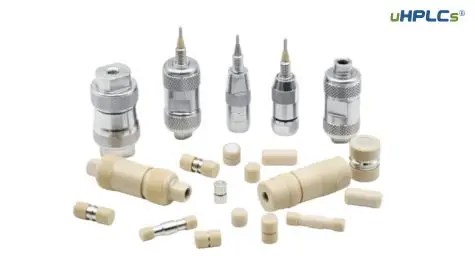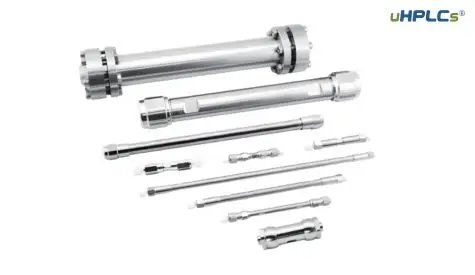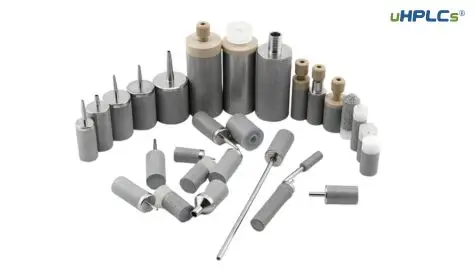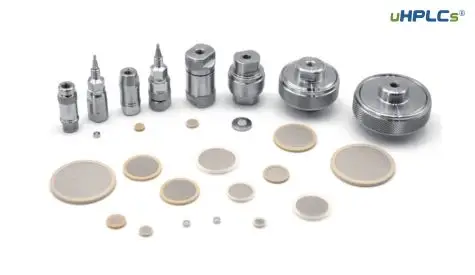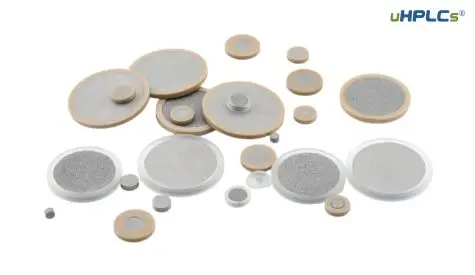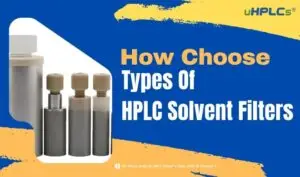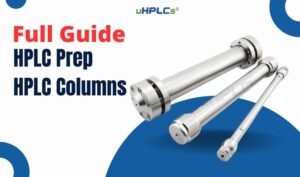High-performance liquid chromatography (HPLC) is a powerful analytical technique that separates and analyzes components in a mixture. It works by pushing a liquid sample (mobile phase) through a column packed with stationary phase. As the sample travels through the column, different components interact with the stationary phase differently, causing them to separate.
Understanding Solvent Filters in HPLC
Solvent filters are devices used to remove unwanted particles and contaminants from the mobile phase before it enters the HPLC system. They play a vital role in ensuring accurate and reliable analysis by:
Importance of Solvent Filtration in HPLC
Solvent filtration plays a crucial role in ensuring accurate and reliable results in HPLC analysis. Here’s why:
1. Protects the HPLC system: Particulate matter in the mobile phase can damage the HPLC pump, column, and detector. This can lead to decreased system performance, increased maintenance costs, and shortened lifespan of the instruments.
2. Improves peak separation: Particulates can interact with the stationary phase, causing peak broadening and reducing the resolution of the separation. This makes it difficult to quantify individual components accurately.
3. Prevents contamination: Mobile phase impurities can contaminate the sample and interfere with the analysis. This can lead to false positive or negative results.
4. Extends the life of the column: Particulates can clog the column, reducing its separation efficiency and requiring more frequent replacement.
5. Improves reproducibility: Consistent filtration ensures that all samples are analyzed under the same conditions, leading to more reproducible results.
HPLC has numerous applications in various fields, including:
- Drug discovery and development: Analyzing the purity and efficacy of new drugs.
- Food and beverage testing: Detecting contaminants and impurities in food and beverages.
- Environmental analysis: Monitoring pollutants in water, air, and soil.
- Clinical diagnostics: Investigating biomarkers for diseases.
- Research: Separating and identifying unknown compounds in a variety of research areas.
Different Types of Solvent Filters

There are Several types of solvent filters are used in HPLC, each with its own advantages and limitations, please check as following Details:
1. Syringe Filters:
- Description: Small, disposable filters attached to a syringe for direct filtration of sample solutions.
- Membrane materials: Nylon, PTFE, PVDF
- Pore sizes: 0.22 μm, 0.45 μm
- Advantages: Easy to use, portable, disposable.
- Disadvantages: Limited filtration volume, can clog easily, may introduce extractables.
2. In-Line Filters:
- Description: Installed directly in the HPLC solvent line for continuous filtration of the mobile phase.
- Filter housings: Stainless steel, PEEK
- Membrane materials: Nylon, PES, PVDF
- Pore sizes: 0.22 μm, 0.45 μm
- Advantages: High capacity, efficient filtration, suitable for long-term use.
- Disadvantages: More complex setup, require regular maintenance and replacement of filters.
3. Solvent Reservoirs with Integrated Filters:
- Description: Solvent reservoirs equipped with built-in filters for filtration during mobile phase preparation and storage.
- Filter materials: Glass fiber, activated carbon
- Pore sizes: 0.22 μm, 0.45 μm
- Advantages: Convenient, reduces manual filtration steps, filters larger volumes.
- Disadvantages: Filters may not be replaceable, may require cleaning or replacement of the entire reservoir.
4. Degasification Filters:
- Description: Specialized filters used to remove dissolved gases from the mobile phase.
- Filter materials: PTFE, hydrophobic membranes
- Pore sizes: 0.22 μm, 0.45 μm
- Advantages: Improve peak shape and baseline stability, reduce bubble formation.
- Disadvantages: Can increase backpressure, require additional equipment.
The choice of the most suitable solvent filter depends on various factors, including:
- Volume of mobile phase: Syringe filters are suitable for small volumes, while in-line filters are better for larger volumes.
- Type of mobile phase: The filter membrane material must be compatible with the solvents used.
- Required pore size: Smaller pore sizes remove more particles but may increase backpressure.
- Cost and convenience: Syringe filters are inexpensive but require more manual work, while in-line filters are more expensive but require less maintenance.
By understanding the different types of solvent filters and their properties, you can choose the most appropriate one for your specific needs and ensure optimal performance of your HPLC system.
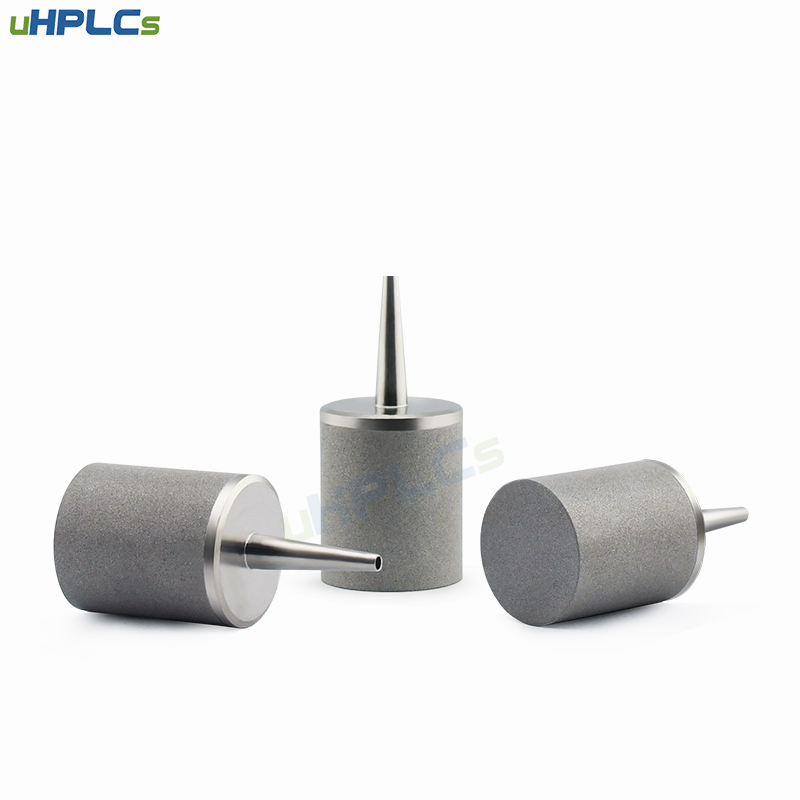
Criteria for Selecting Solvent Filters in HPLC You Should Consider
Choosing the right solvent filter is crucial for ensuring optimal performance and reliability of your HPLC analysis. Here are key factors you should consider:
1. Filter Size:
- Syringe filters: Ideal for small sample volumes (<100 ml).
- In-line filters: Suitable for larger volumes and continuous filtration.
- Solvent reservoir filters: Convenient for preparing and storing mobile phases.
2. Membrane Material:
- Nylon: Widely used, offers good chemical resistance and low protein binding.
- PTFE: Chemically inert, suitable for harsh solvents and aggressive buffers.
- PVDF: High mechanical strength and resistance to organic solvents.
- PES: Hydrophilic, preferred for aqueous mobile phases.
3. Pore Size:
- 0.22 μm: Removes most bacteria and fine particles, suitable for most HPLC applications.
- 0.45 μm: Removes larger particles, often used for protecting HPLC columns.
- 0.1 μm: Removes even smaller particles, used for UHPLC and sensitive analyses.
4. Solvent Compatibility:
- Ensure the filter membrane is compatible with all solvents in your mobile phase.
- Some membranes may leach extractables that can interfere with analysis.
5. Filter Housing Compatibility:
- For in-line filters, choose a housing compatible with your HPLC system’s pressure and connections.
- Stainless steel housings are robust, while PEEK housings are inert and transparent.
6. Backpressure:
- Smaller pore sizes and thicker membranes increase backpressure in the HPLC system.
- Consider a filter with low backpressure to maintain optimal flow rate and performance.
7. Cost and Convenience:
- Syringe filters are inexpensive but require manual filtration.
- In-line filters are more expensive but offer convenient continuous filtration.
8. Degasification:
- Consider a degassing filter if your mobile phase contains dissolved gases that can cause baseline instability and bubbles.
Impact of Solvent Filter Choice on HPLC Performance:
- Peak Shape: Poorly chosen filters can contribute to peak broadening and reduced resolution.
- Baseline Stability: Dissolved gases can cause baseline noise and interfere with peak detection.
- Column Life: Particulates can damage the column, leading to decreased performance and shorter lifespan.
- Detection Sensitivity: Extractables from the filter membrane can interfere with detection, particularly for sensitive analyses.
- Reproducibility: Consistent filtration ensures all samples are analyzed under the same conditions, leading to more reliable results.
By carefully considering these criteria, you can select the best solvent filter for your specific HPLC needs and ensure optimal performance, reliable results, and extended system lifespan.
Maintenance and Troubleshooting
Regular maintenance of solvent filters is essential for ensuring optimal performance and preventing damage to your HPLC system. Here are key maintenance steps:
1. Filter Replacement:
- Syringe filters: Replace after every filtration or when visibly clogged.
- In-line filters: Replace at regular intervals based on manufacturer’s recommendations or when backpressure increases significantly.
- Solvent reservoir filters: Replace as per the manufacturer’s instructions or when noticeably dirty.
2. Housing Cleaning:
- In-line filters: Clean the filter housing regularly to remove built-up debris and prevent contamination.
- Solvent reservoir filters: Clean the reservoir and filter holder according to the manufacturer’s instructions.
3. Degasification Filter Maintenance:
- Replace the degassing membrane regularly.
- Clean the degassing chamber as per the manufacturer’s instructions.
4. Inspection:
- Regularly inspect all filters and housings for leaks, cracks, or damage.
- Replace any damaged components immediately.
5. Record Keeping:
- Keep a log of filter replacements, cleaning dates, and any observed issues.
- This helps track filter performance and identify potential problems early.
Common Pitfalls and Troubleshooting:
1. High Backpressure:
- Possible causes: Clogged filter, incompatible filter membrane, air bubbles in the system.
- Solutions: Replace the filter, check filter compatibility, degas the mobile phase.
2. Poor Peak Shape:
- Possible causes: Contaminated filter, inadequate filtration, wrong pore size, incompatible solvent or filter material.
- Solutions: Replace the filter, ensure proper filtration technique, choose the correct pore size and compatible materials.
3. Baseline Noise:
- Possible causes: Dissolved gases in the mobile phase, contaminated filter, air leaks.
- Solutions: Degas the mobile phase, replace the filter, check for leaks.
4. Contamination:
- Possible causes: Leaking filter, improper handling of solvents, contaminated filter materials.
- Solutions: Replace the filter, ensure proper solvent handling techniques, use filters with low extractables.
5. Leaks:
- Possible causes: Damaged filter housing, loose connections, worn seals.
- Solutions: Tighten connections, replace seals, repair or replace damaged housing.
By following these maintenance and troubleshooting guidelines, you can ensure that your solvent filters function optimally and contribute to reliable, high-quality HPLC analysis.
Additional Tips:
- Always use high-quality filters from reputable manufacturers.
- Store filters in a cool, dry place away from direct sunlight.
- Follow the manufacturer’s instructions for cleaning and maintenance.
- Dispose of used filters safely according to local regulations.
By investing time and effort in proper solvent filter maintenance, you can save money and time in the long run by preventing costly repairs and downtime.
FAQs
Q: Why is solvent filtration necessary in HPLC?
A: Solvent filtration plays a crucial role in HPLC for several reasons:
- Protects the HPLC system: Particulate matter in the mobile phase can damage the pump, column, and detector, leading to decreased system performance, increased maintenance costs, and shortened lifespan.
- Improves peak separation: Particulates can interact with the stationary phase, causing peak broadening and reducing the resolution of the separation, making it difficult to quantify individual components accurately.
- Prevents contamination: Mobile phase impurities can contaminate the sample and interfere with the analysis, leading to false positive or negative results.
- Extends the life of the column: Particulates can clog the column, reducing its separation efficiency and requiring more frequent replacement.
- Improves reproducibility: Consistent filtration ensures that all samples are analyzed under the same conditions, leading to more reproducible results.
Q: What are the different types of solvent filters used in HPLC?
A: Several types of solvent filters are used in HPLC, each with its own advantages and limitations:
- Syringe filters: Small, disposable filters directly attached to a syringe for sample filtration.
- In-line filters: Installed directly in the HPLC solvent line for continuous filtration.
- Solvent reservoirs with integrated filters: Solvent reservoirs equipped with built-in filters for filtration during mobile phase preparation and storage.
- Degasification filters: Specialized filters used to remove dissolved gases from the mobile phase.
The best choice depends on factors like filtration volume, mobile phase type, required pore size, cost, and convenience.
Q: How do I choose the right solvent filter for my HPLC application?
A: Choose the best solvent filter by considering:
- Filter size: Syringe filters for small volumes, in-line filters for larger volumes.
- Membrane material: Nylon for common use, PTFE for harsh solvents, PVDF for organic solvents, PES for aqueous mobile phases.
- Pore size: 0.22 μm for most applications, 0.45 μm for column protection, 0.1 μm for UHPLC.
- Solvent compatibility: Ensure compatibility with all mobile phase components.
- Filter housing compatibility: Choose a housing compatible with your system’s pressure and connections.
- Backpressure: Consider filter size and membrane thickness to avoid excessive backpressure.
- Cost and convenience: Balance cost and convenience based on your needs.
- Degasification: Consider a degassing filter if dissolved gases are present.
Q: What are some common pitfalls to avoid when using solvent filters in HPLC?
A: Common pitfalls include:
- Using the wrong filter type or size: This can lead to insufficient filtration, increased backpressure, or damage to the HPLC system.
- Not replacing filters regularly: Clogged filters can significantly reduce performance and contaminate samples.
- Using incompatible filter materials: This can lead to extractables leaching into the mobile phase and interfering with the analysis.
- Not degassing the mobile phase: Dissolved gases can cause baseline noise and affect peak shapes.
- Not cleaning and maintaining filters properly: This can lead to contamination and decreased performance.
Q: How often should I replace my solvent filters?
A: The frequency of filter replacement depends on several factors, including:
- Type of filter: Syringe filters are typically replaced after each use, while in-line filters can be used for longer periods.
- Mobile phase composition: Aggressive solvents or buffers may require more frequent filter replacement.
- Filtration volume: Higher filtration volumes will require more frequent filter replacement.
- Backpressure: Increased backpressure is an indication that the filter needs replacement.
It’s recommended to follow the manufacturer’s specific instructions for your chosen filter type and application.
Q: What should I do if I experience problems with my solvent filtration?
A: If you encounter issues like high backpressure, poor peak shape, or baseline noise, consider the following troubleshooting steps:
- Check for clogged filters and replace them if necessary.
- Ensure the filter is compatible with your mobile phase.
- Degas the mobile phase to remove dissolved gases.
- Clean and maintain your filters according to the manufacturer’s instructions.
- Check for leaks in the system and tighten connections if necessary.
- If the problem persists, consult the manufacturer of your HPLC system or filters for further assistance.

